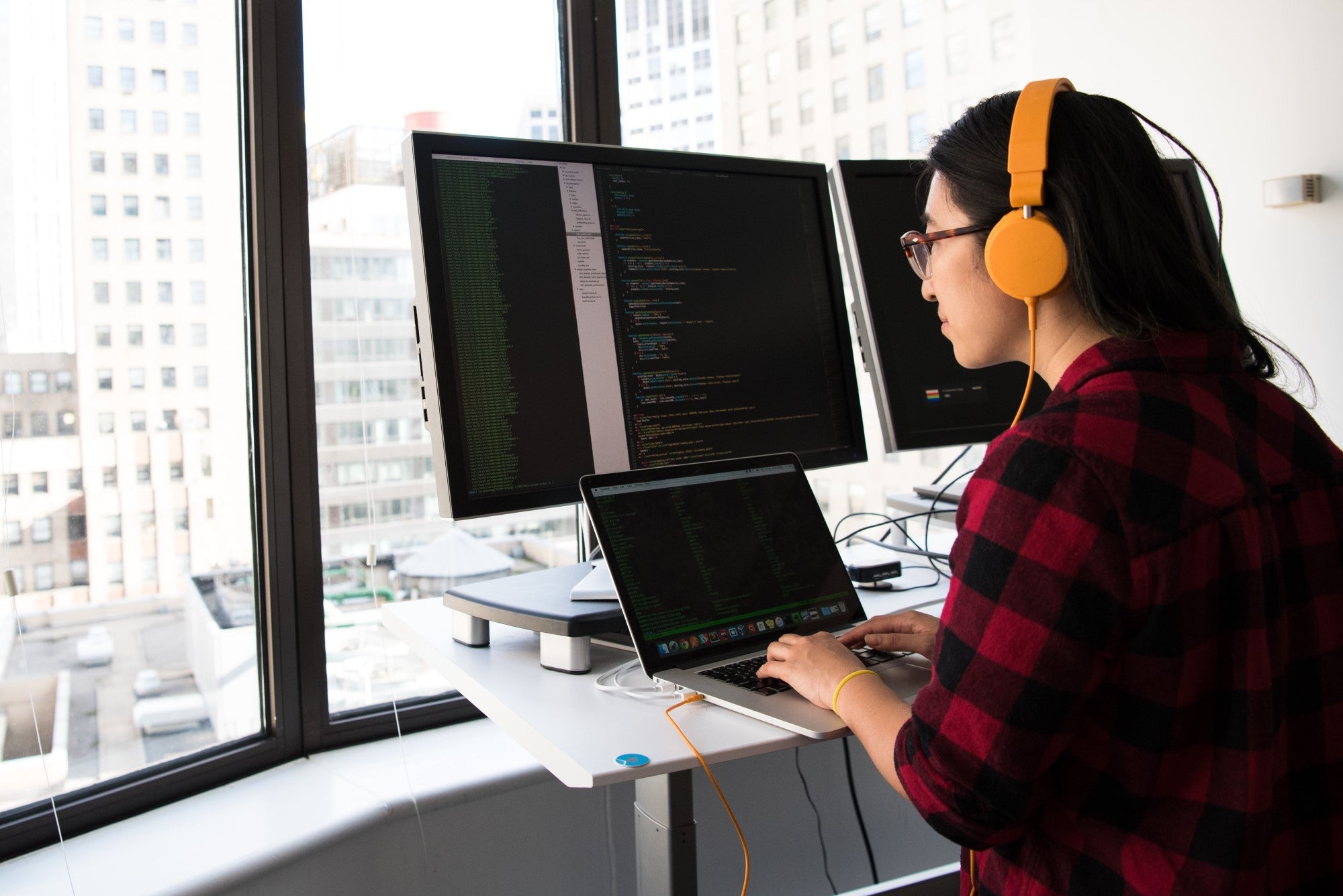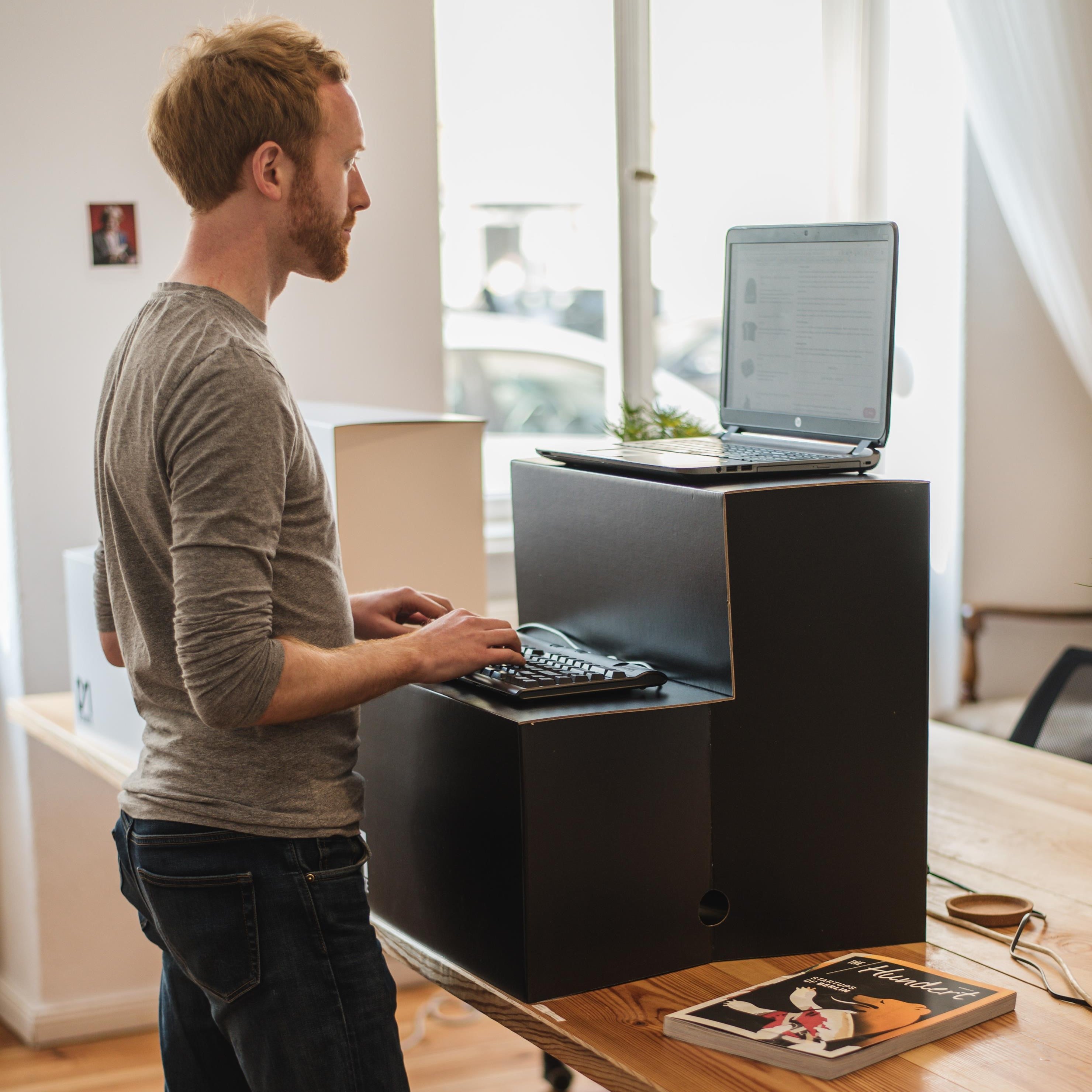Digital working coupled with sedentary lifestyles
The Digital Revolution also known as the Third Industrial Revolution is the shift from mechanical and analogue technology to digital electronics which began in the latter half of the 20th century with the adoption of digital computers.
The invention of the internet in the 1960s and rise of the home computer in the 1970s and 1980s meant that whilst less powerful and had less memory than business computers, families could enjoy the benefits of better graphics and sound. Their main use was usually for playing video games, word processing and doing homework.
As the idea of personal computers gained traction and technology improved, the design of portable laptops emerged in the 1990s and early 2000s. Something once considered for use for short periods of time or for specific niche markets like accountants or mobile sales people has now become one of the most widely used products. Working with and using digital devices is now part of normal daily life and in fact some would say completed embedded in everything we do.
On the one hand this technology is full of obvious benefits; enabling us to connect 24 hours a day with people all around the world as and when we want to; it’s encouraged a whole new way of working with digital nomads travelling the world and working anywhere they choose to spend their time; people can set up an online business with really no great difficulty as the internet aspires to educate us on anything we seek information on.
This incessant connectedness though comes with its drawbacks where people connect in person less so or obsessed with comparing their lives to others or find themselves addicted to being near or using a device at all times throughout the day through fear of missing out. For many people this unfortunately also aligns with a completely sedentary lifestyle. A device such as a mobile phone or laptop that in effect is portable and allows us to be agile with where we conduct our work and spend our life has also become a source of lost freedom and forced us to be less active.
Previous to the Digital Era workers would burn on average 2000 calories per day at work whereas people now burn on average 200 calories per day at work.
Definition:Sedentary
- Involving little exercise or physical activity.
- Characterised by or requiring a sitting posture.
- Accustomed to sit or rest a great deal or to take little exercise.
Obesity in the UK is a common problem and estimated to affect 1 in every 4 adults and 1 in every 5 children according to the NHS and whilst not all of obesity is solely as a result of a sedentary lifestyle, much of it we know is. People really are sitting more than ever whether that’s during work hours working at a desk, spending leisure time on the sofa watching TV or playing video games. We are sitting on average for at least 10 hours per day and for many people much more.
Leading a sedentary lifestyle not only has adverse effects to people’s weight management and general health but it can also cause musculoskeletal disorders, and this is something that should be of great concern to people and businesses who have in the last 6 months transitioned to working from home more permanently.
The interim findings from the IES Working at Home Wellbeing Survey conducted during the first two weeks of the ‘lockdown’ (related to covid-19) have been analysed to produce a preliminary picture of how homeworking is affecting both the physical and mental wellbeing of a new army of UK homeworkers.
Headline statistics include:
- There has been a significant increase in musculoskeletal complaints. More than half of the survey respondents reported new aches and pains, especially in the neck (58 per cent), shoulder (56 per cent) and back (55 per cent), compared to their normal physical condition.
- Diet and exercise are on the wane with one fifth (20 per cent) of respondents admitting to an increase in alcohol consumption, while a third (33 per cent) are eating a less healthy diet, and over half (60 per cent) acknowledging that they are exercising less.
- Poor sleep and increased risk of exhaustion are also cause for concern. The majority of respondents reported a loss of sleep due to worry (64 per cent); and corresponding increased symptoms of fatigue (60 per cent), possibly as a consequence of nearly half (48 per cent) reporting working patterns that include long and irregular hours.
This is all might seem doom and gloom, but the good news is work environments, schools, communities and cities can be re-imagined and reinvented as walking spaces, and people thereby offered more active, happier, healthier and more productive lives.
One tool that can also help to encourage more movement is a standing desk. Recently published research by Dr Chris van Tullekan has shown some significant insights into the effects of using a standing desk. One of which is when standing participants had a tiny increase in their heart rate which, when averaged over the days, weeks and months leads to the equivalent number of calories burned as if they’d run about 10 marathons in the year.
In real terms though this means that when standing, people burn approximately an additional 8 calories an hour than if they were seated. If weight loss is your goal, then just the act of standing may not yield significant enough results for you. Walking though for 30 minutes has been shown to burn approximately 100 calories so pacing around the office, taking phone calls whilst walking or going out for a lunch time stroll might be more impactful for weight loss.
The ability to move from a seated position to a standing position also encourages people to clear the sugar out of their blood stream more quickly than when they were sitting down which is usually seen in people who demonstrate active lifestyles. The act of standing in itself encourages a change in mindset, increases blood circulation, allows the body to move and stretch out of an awkward sitting posture and refocus their thoughts. When you are standing you are also more likely to move than if you were seated.
Ideally people should be moving between sitting, standing and moving throughout the day and this should be alternated regularly. It’s advised that you don’t sit for long periods and then stand for long periods. The real benefit occurs when you change your posture regularly. How often you do so really come down to people’s individual thresholds for sitting and standing, how active or inactive you are currently, any pre-existing injuries or diseases you may have, and what equipment you have available to you.
Much of the research does though suggest moving multiple times per hour. Professor Emeritus Hedge suggests 20 minutes sitting, 8 minutes standing and 2 minutes moving. This allows you a 30-minute cycle between 3 different postures. Anyone who works within the realms of this cycle should certainly feel some benefit to their physical and mental health. Leon Straker’s research suggests that the threshold for standing could be up to 45 minutes at a time with little to no adverse effects to the body and other’s mention at least once an hour.
The main goal is to move regularly and at least once per hour as an absolute minimum. Anecdotally people who move 2-3 times per hour seem to reap the benefits more than those who sit for long periods of time with little or no movement breaks.
Environments foster sedentariness in many ways and at multiple societal levels. On an individual level, a person is confronted with environmental cues to sit throughout the day, e.g. drive-through restaurants, drive-through car washes, seated meetings, seated dinner parties, seated work environments, seated public transport so it is no wonder that many people lead such sedentary lifestyles.
Creating environments that foster movement throughout the day should be our collective goal.
In an office environment or whilst working from home, sit to stand desks can offer a simple and quick solution. However, the value is in the amount of movement people do throughout the day so a standing desk should be used as a tool to promote standing and a natural rhythm of movement as opposed to the full solution.
When working at a desk it is also important to make sure it is set up correctly to meet your body requirements. An easy way to do this is to set yourself up properly in your chair or stand in a neutral posture and find where your natural elbow position is. Where you find your natural elbow position, your desktop should meet this. This will help to reduce any unnecessary shoulder shrugging when reaching your keyboard and mouse.
Keep the tools on your desk in close proximity to avoid you moving your body awkwardly to reach them, position your shoulders down and relaxed, your wrists straight and look straight ahead at your monitor or device. The top of your laptop should be at or just below your natural eye level when looking straight ahead and in a good neutral posture.





